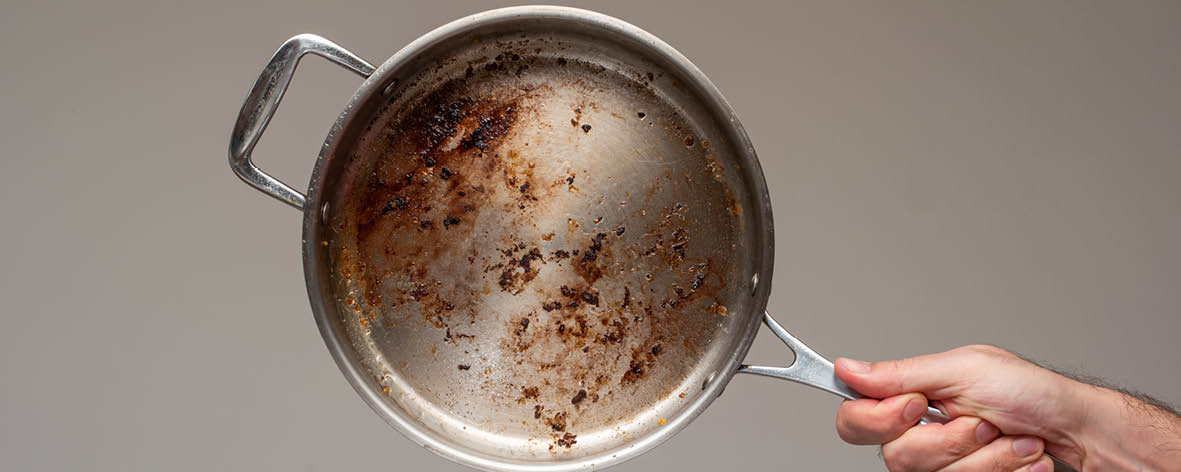How to stop food sticking to a stainless steel pan … kitchen helper

We’ve all done it. Somehow, you’ve welded a chicken breast onto the surface of the frying pan, and when you do finally lift it off, half the chicken is left behind in a burnt mess which no dishwasher, human or otherwise, can remove. There’s a trick that can stop this happening. Read on to find out more.
For you science nerds out there, it’s called the Leidenfrost effect. This is demonstrated when you heat a pan up on high and then drop a few drops of water onto the surface of the pan. The water, instead of evaporating as steam, will form a ball and roll across the pan. The heat causes a thin layer of vaporised water to coat the rest of the droplet and allows it to roll around on this steam ‘cushion’. The same thing happens when you put food into the pan – the food also gets some of the same sliding effects as the droplet of water, when the moisture it contains makes contact with the pan.
Another reason why it is really important to pre-heat your pan is that stainless steel has a porous surface, full of microscopic pores. As the metal heats it expands, making those pores smaller, creating a smoother surface less likely to stick to food.
Finally, don’t put cold food straight from the fridge into the pan. Even if you have pre-heated the pan adequately this will all be undone if you put a very cold piece of steak or chicken into it, and it will stick. Always allow food to come to room temperature before cooking it.
So, follow these tips to stop your food sticking:
1. Allow your food to come to room temperature.
2. Pre-heat the pan and test whether it is hot enough by dropping a few drops of water into the pan and observing the Leidenfrost effect.
3. If it has reached the appropriate heat, dry the water with paper towel, pour in a few tablespoons of your preferred oil, and then place the food in the pan.
4. The food shouldn’t stick and should be able to be lifted or turned once the food has seared. If the food won’t lift, it isn’t ready to be turned. It should release when the right level of searing has occurred.
5. You can lower the temperature for the remainder of the cooking time, if required once the food has seared and released from the pan surface.

